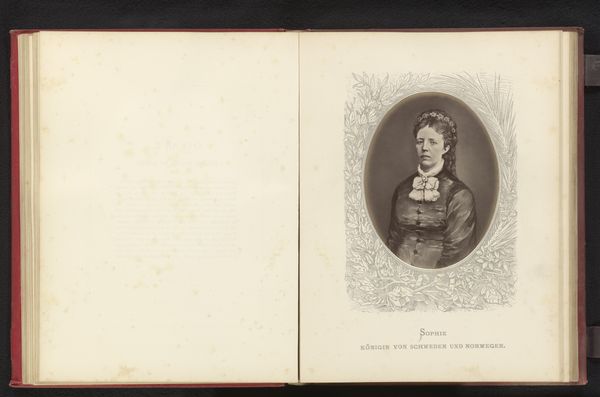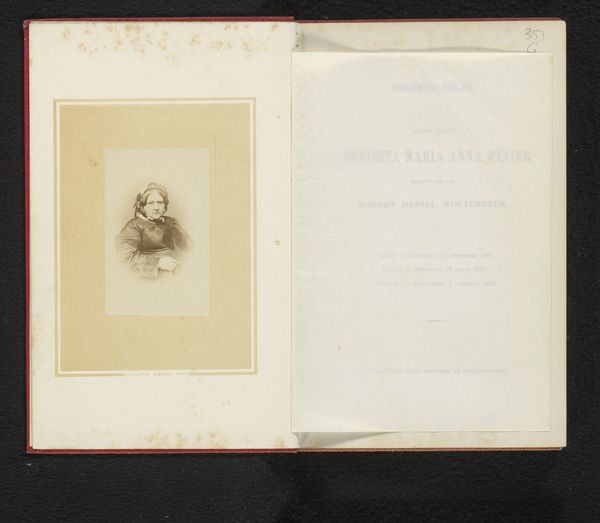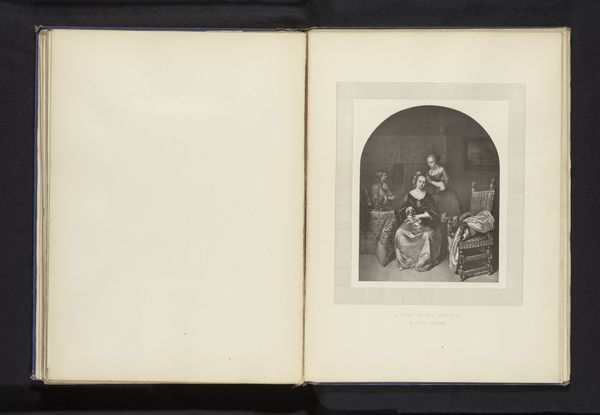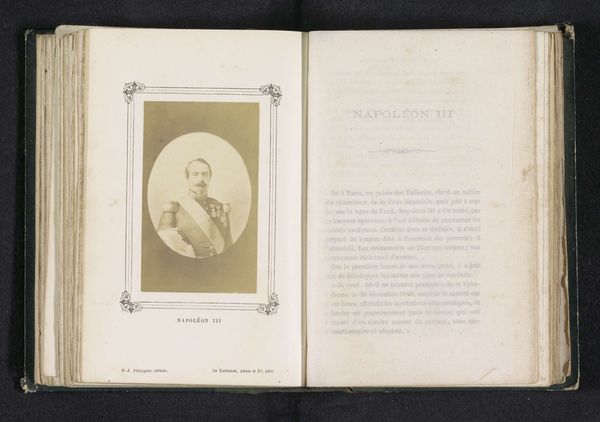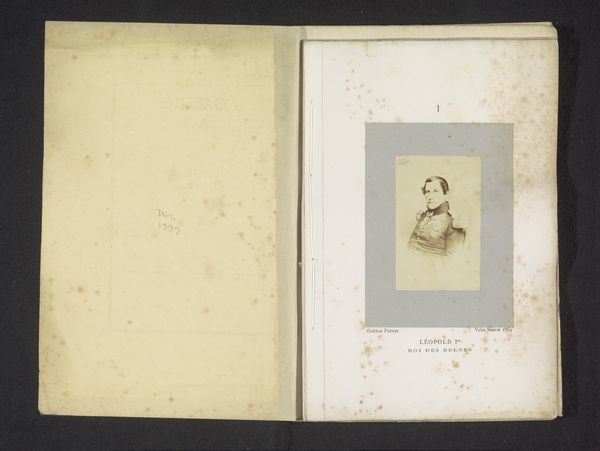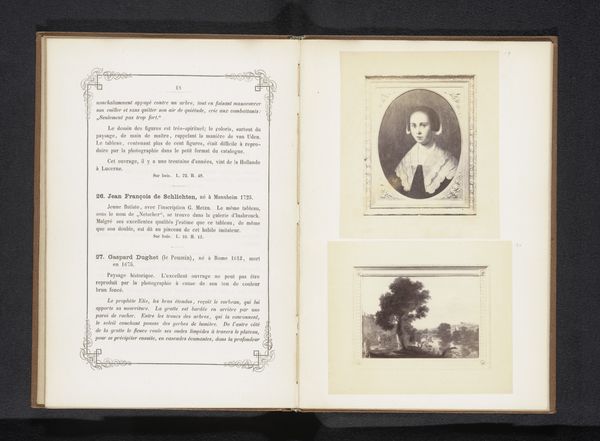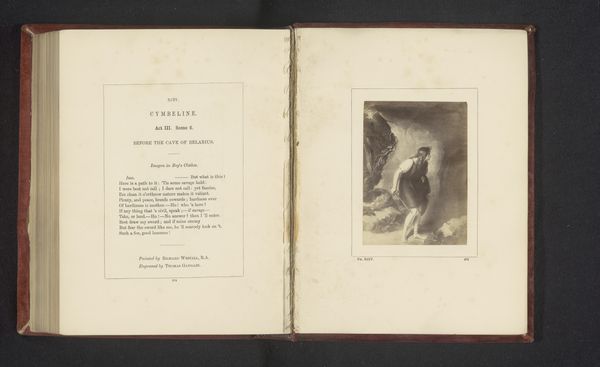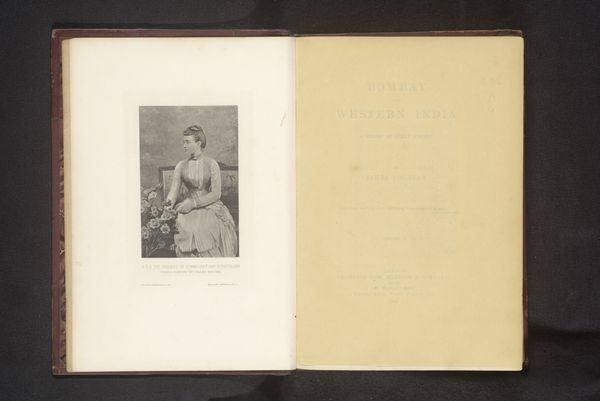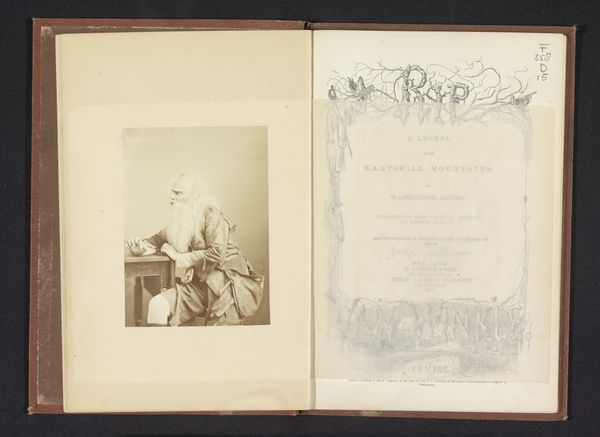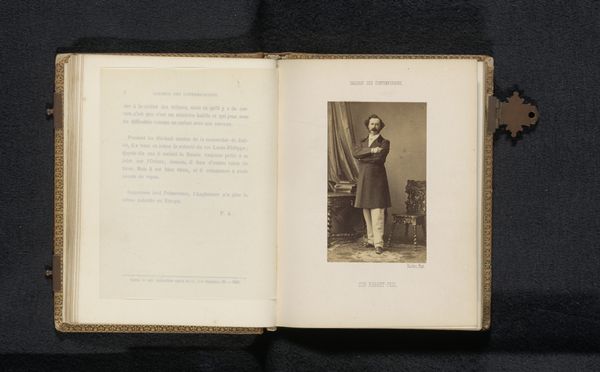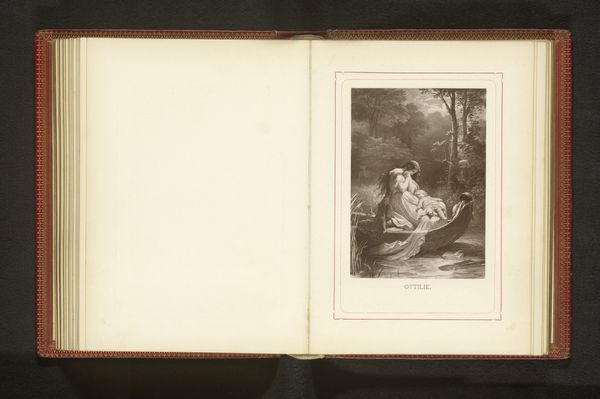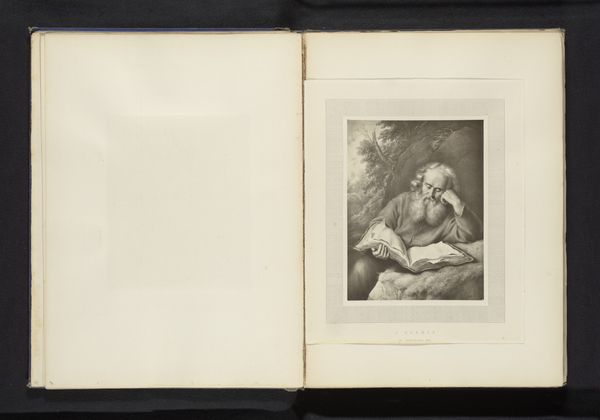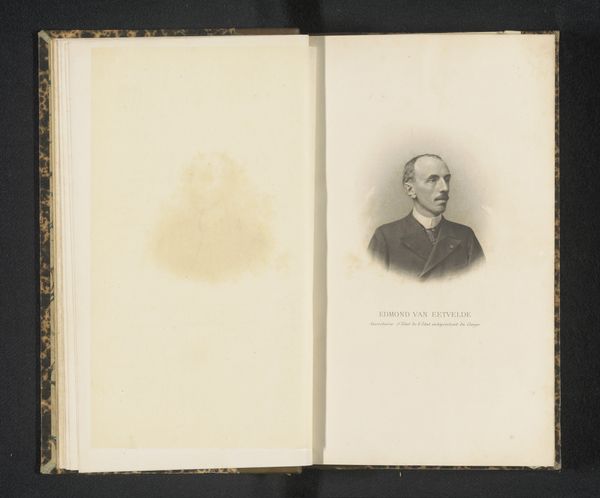
Dimensions: height 75 mm, width 53 mm
Copyright: Rijks Museum: Open Domain
Curator: Looking at this open book, before us, we see a print, "Buste van de dichter Hendrik Tollens", dating to before 1857 and housed right here at the Rijksmuseum. Editor: My immediate reaction is one of romantic longing! The soft paper and the engraved imagery evoke such a delicate, almost sentimental mood. It feels incredibly intimate, like peeking into someone's personal sketchbook. Curator: Indeed! Let's examine that materiality. The paper itself appears aged, likely handmade. This adds a tangible element to the print – we can almost feel the labor and craftsmanship that went into its production. And consider the typography; note the thick, hand-drawn typeface. Editor: Absolutely. It's difficult to ignore the contextual weight of this book's existence. Here is a man, Hendrik Tollens, represented not just by his poetry, but visually by a Romantic image situated amidst imagery evocative of folk tales or perhaps the romantic yearnings of the period's women. Curator: And we must also think of printmaking at that time; a mode of relatively accessible mass production of imagery and text intended for a bourgeoning literate public, bringing art and literature directly into the home. Editor: Exactly, who was consuming Tollens' work, and how did it reflect or reinforce the socio-political structure of that period? Was this accessible to working-class individuals? Curator: Probably not in large numbers. Also, consider the interplay of the portrait versus the generic Romantic illustrative image beside it, emphasizing the construction of authorship and public image. It makes you wonder who the artist(s) and engravers were. Editor: It invites questions about visibility and value! The engravers’ skill is critical to communicating meaning. Are their hands valued and respected? Curator: It certainly challenges the Romantic ideal of solitary artistic genius when we see this kind of collaborative production at play. I’m left thinking about the often unseen hands behind the art we celebrate. Editor: I am now questioning the very idea of "Romanticism" in relationship to that labor and, of course, how literary Romanticism informed identity at the time.
Comments
No comments
Be the first to comment and join the conversation on the ultimate creative platform.
